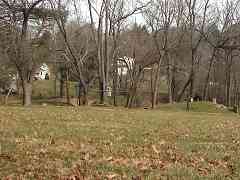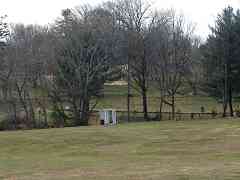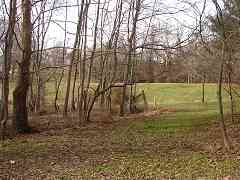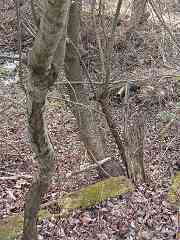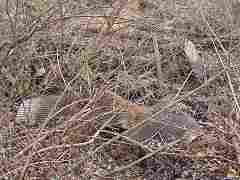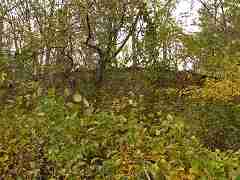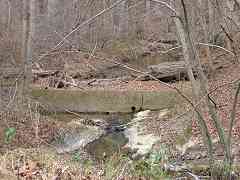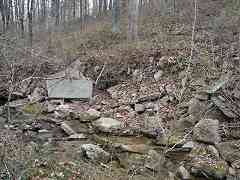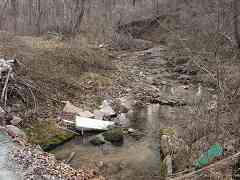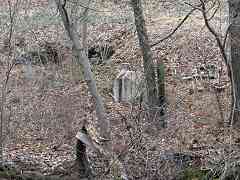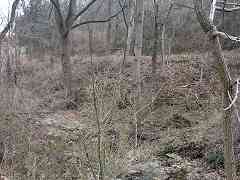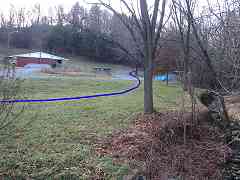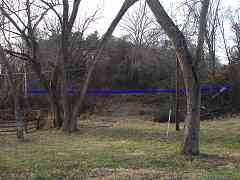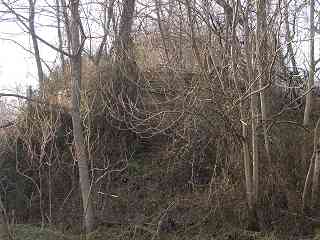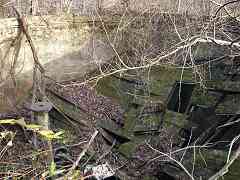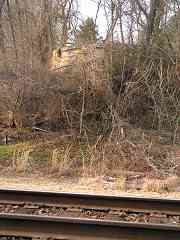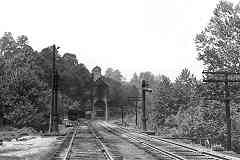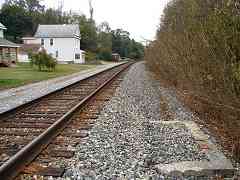|
The penstocks at Gaither are long gone, but the concrete foundation
on which one had perched is still present. The west tank is adjacent
on the east side of what had previously been Gaither's general store,
the white house at left.
Gaither's penstocks are visible in the nearly identical view from 1948
on page 280 of the Impossible Challenge II book.
B&O offered water at the following OML locations in 1917: Relay,
Lees, Grays, Marriottsville, Gaither, Mount Airy Junction, Reel's Mill,
Frederick Junction, and Point of Rocks. In addition to Gaither, tanks
survive at Lees, Gray, and Mount Airy Junction, and perhaps elsewhere
but I have not (yet) explored them all.
|
